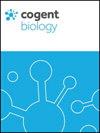Acute and chronic toxicities assessment of arsenic (III) to catfish, Silurus lanzhouensis in China
引用次数: 4
Abstract
Abstract We evaluated the lethality, uptake, depuration, accumulation, and effects of waterborne arsenic in Lanzhou catfish (Silurus lanzhouensis). The 96-h LC50 and safe concentrations (SC) for Lanzhou catfish were 12.88 and 1.288 mg/L, respectively. We evaluated the effects of chronic exposure to 0 mg/L (C), 1.288 mg/L (T1), 0.5 mg/L (T2), and 0.1 mg/L (T3) and measured depuration rates post-exposure. As accumulated in the target organs in the following order of concentration: gill > muscle > brain > liver, which is consistent with the variation in k1. The values for k1 and CAmax declined with a decrease in arsenic concentration in the different target organs, whereas the reverse was true for BCF. The CL,50(t) values decreased initially and then approached equilibrium status after 30 of exposure. The gill tissue had the highest depuration rates, followed by muscle, brain, and liver. The treatment groups exposed to lower arsenic concentrations treats had lower k2 values in the target organs, but higher depuration half-lives (t1/2) at lower arsenic concentrations. Our results demonstrate that the target organs of Lanzhou catfish are capable of regulating arsenic toxicity by way of internal regulation mechanisms, and the rate of arsenic uptake and depuration over time are concentration- and tissue-dependent.砷(Ⅲ)对中国兰州鲇的急慢性毒性评价
摘要对兰州鲇(Silurus lanzhouensis)水性砷的致死性、吸收、净化、积累及效果进行了评价。兰州鲶鱼96小时LC50和安全浓度(SC)分别为12.88和1.288 mg/L。我们评估了长期暴露于0 mg/L(C)、1.288 mg/L(T1)、0.5 mg/L(T2)和0.1 mg/L(T3)的影响,并测量了暴露后的净化率。As在靶器官中的积累顺序如下:鳃>肌肉>大脑>肝脏,这与k1的变化一致。k1和CAmax的值随着不同靶器官中砷浓度的降低而下降,而BCF则相反。CL,50(t)值最初降低,然后在暴露30天后接近平衡状态。鳃组织的净化率最高,其次是肌肉、大脑和肝脏。暴露于较低砷浓度治疗的治疗组在靶器官中具有较低的k2值,但在较低的砷浓度下具有较高的净化半衰期(t1/2)。我们的研究结果表明,兰州鲶鱼的靶器官能够通过内部调节机制调节砷的毒性,并且随着时间的推移,砷的吸收和净化速率是浓度和组织依赖性的。
本文章由计算机程序翻译,如有差异,请以英文原文为准。
求助全文
约1分钟内获得全文
求助全文

 求助内容:
求助内容: 应助结果提醒方式:
应助结果提醒方式:


